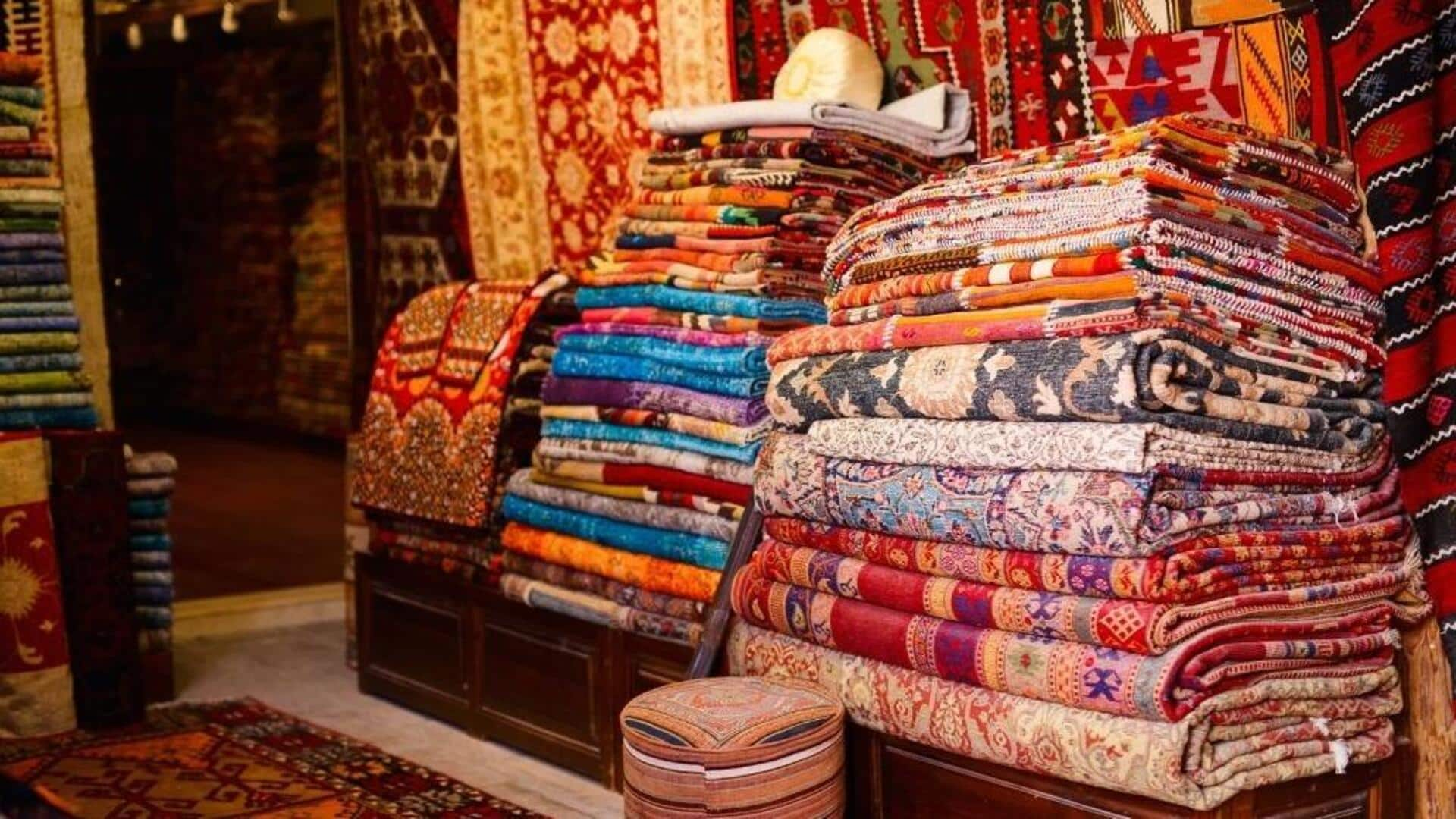
Discover Turkey's unique carpet weaving traditions
What's the story
Turkey is famous for its rich cultural heritage and one of its most interesting traditions is carpet weaving. This time-honored craft has been handed down through the generations, displaying intricate designs and bright colors. Turkish carpets are not only decorative pieces, they are an amalgamation of history, art, and culture. Every region in Turkey has its own distinct style and technique, making these carpets highly coveted around the globe.
Knotting techniques
The art of knotting
What makes the art of Turkish carpet weaving unique is the use of the double knot, or the Ghiordes knot. This technique wraps two strands around each warp thread, resulting in a rug with a dense and durable pile. The benefit of the double knot method is that it can create more intricate and detailed patterns, unlike the simplified single-knot techniques in other weaving traditions.
Regional styles
Regional variations
Different regions of Turkey also have their own unique style of carpet weaving that reflects their local culture and environment. For instance, Hereke is famous for carpets made with fine silk threads and intricate patterns, exemplifying elegance and sophistication. Meanwhile, Konya's carpets are characterized by geometric designs and use of earthy tones, giving them a more rustic and traditional touch.
Dyeing methods
Natural dyeing process
Traditional Turkish carpets are famous for their bright colors, which are made using natural dyes from plants, roots, and insects. The labor-intensive dyeing process also speaks of how mindful the weavers are in keeping ancient techniques alive. Unlike synthetic dyes, these natural alternatives provide hues that stay bright over time, making each carpet a stunning piece of art.
Pattern meanings
Symbolism in patterns
Turkish carpets come with patterns that have deep symbolic meanings. Life events and beliefs are reflected in the patterns, where stars symbolize happiness while water motifs suggest fertility. These symbols offer insight into cultural significance, making each carpet more than a decorative item. Understanding these motifs adds depth to the appreciation of each piece, revealing stories woven into the fabric.
Conservation initiatives
Preservation efforts
To battle the perils of industrialization and the decreasing interest from the youth, efforts are underway to preserve this ancient craft. Workshops teaching traditional carpet weaving skills are attempting to draw in the younger generations, keeping the cultural heritage alive. Such initiatives hope to keep the craft alive, passing on priceless techniques and knowledge to future weavers, and giving this tradition a place in the years to come.